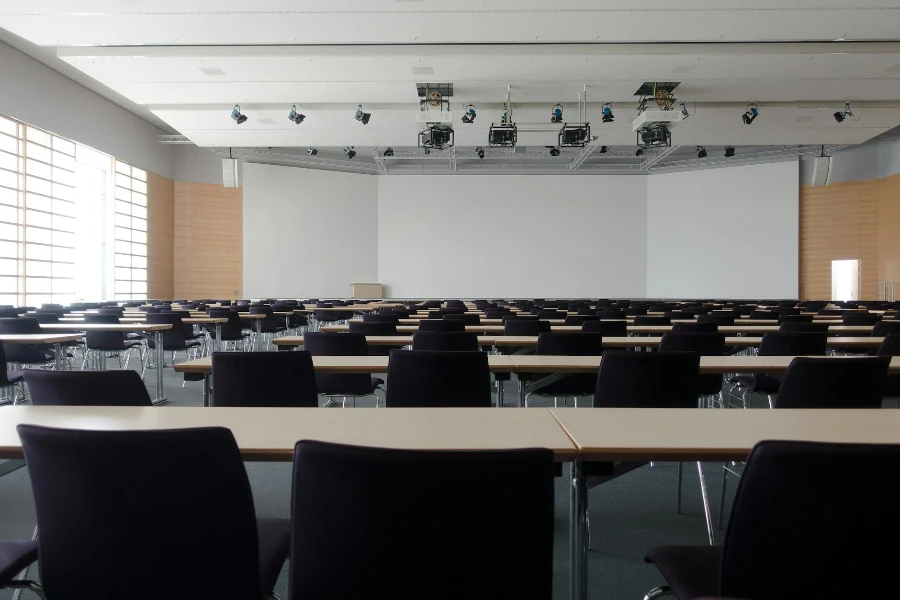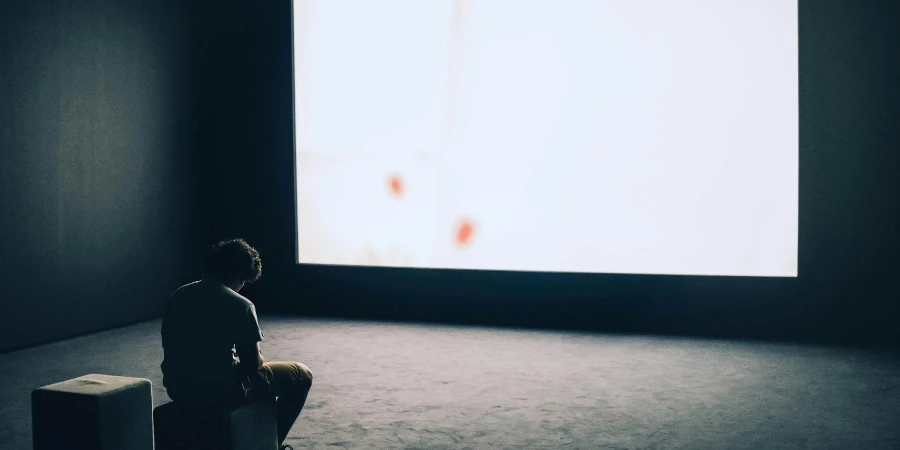In the realm of visual technology, projectors play a pivotal role in both professional settings and home entertainment. They magnify images and videos onto surfaces, making content more accessible to larger audiences. This guide explores the intricacies of projectors, their benefits and drawbacks, and offers insights on selecting and using them effectively.
Table of Contents:
– What is a projector?
– How does a projector work?
– Benefits and drawbacks of projectors
– How to choose a projector
– How to use a projector
What is a projector?

A projector is a device that captures an image or video signal and projects it onto a large surface, typically a screen or wall, using light. This technology has evolved significantly from the early days of overhead projectors to the modern digital versions that offer crisp, clear images in both color and black and white. Projectors are widely used in various settings, including classrooms, conference rooms, home theaters, and outdoor cinemas, providing a versatile solution for displaying content on a grand scale.
The core components of a projector include a light source, an image source, and a system of lenses. The light source can be a lamp, LED, or laser, which illuminates the image or video to be projected. The image source, traditionally a transparent slide or film, is now more commonly a digital signal from a computer, Blu-ray player, or streaming device. The lenses then focus and magnify this image, projecting it onto the desired surface.
Projectors come in several types, including LCD (Liquid Crystal Display), DLP (Digital Light Processing), and LCoS (Liquid Crystal on Silicon), each offering distinct advantages in terms of image quality, color accuracy, and contrast ratios. Understanding these types is crucial for anyone looking to invest in a projector, as it affects the device’s performance in different environments and applications.
How does a projector work?

The functionality of a projector is fascinating, combining optical science and digital technology to bring images and videos to life on a grand scale. At its heart, a projector works by shining a beam of light through an image, which is then magnified and projected onto a screen or wall. This process involves several key components working in harmony: the light source, the image source, and the projection lens.
The light source is the starting point, providing the necessary illumination. In modern projectors, this can be an LED, lamp, or laser, each offering different benefits in terms of brightness, color accuracy, and life expectancy. The light then passes through the image source, which modulates it based on the input signal, creating the image to be projected. This modulation can be achieved through various technologies, such as LCD, DLP, or LCoS, each manipulating light in unique ways to produce the final image.
Finally, the projection lens focuses and enlarges this image onto the projection surface. The quality of this lens is crucial, as it must accurately preserve the image’s integrity while enlarging it significantly. Advanced projectors may also include zoom, focus, and lens shift functions, allowing for precise control over the image size, clarity, and position, ensuring the best possible viewing experience.
Benefits and drawbacks of projectors

Projectors offer a unique set of advantages that make them an attractive option for many. One of the most significant benefits is the ability to produce large images, making them ideal for group viewings, such as in classrooms, conference rooms, and home cinemas. This capability allows for a more immersive experience, whether you’re presenting data, teaching a lesson, or watching a film. Additionally, projectors are generally portable and can be set up in various locations, offering flexibility not typically found with traditional television sets or monitors.
However, projectors also come with their own set of challenges. One of the primary drawbacks is the need for a controlled lighting environment. To achieve optimal image quality, ambient light must be minimized, which can be problematic in spaces that cannot be completely darkened. Furthermore, projectors require regular maintenance, including cleaning and, eventually, replacing the light source, which can add to the overall cost of ownership.
Another consideration is the varying performance across different types of projectors. LCD projectors, for example, are known for their vibrant colors and sharp images but can suffer from the “screen door” effect, where the grid between pixels becomes visible. DLP projectors offer smoother images but can produce a rainbow effect for some viewers. Understanding these nuances is crucial when considering a projector for your specific needs.
How to choose a projector

Selecting the right projector involves considering several key factors to ensure it meets your specific requirements. The first consideration should be the projector’s intended use, as this dictates the necessary features and performance levels. For instance, a projector for a home theater will prioritize different aspects, such as image quality and contrast ratio, compared to one intended for presentations, which might focus more on brightness and portability.
Brightness, measured in lumens, is another critical factor. A higher lumen count is essential for environments with ambient light, ensuring the projected image remains visible and vibrant. However, in controlled, dark environments, such as home theaters, too much brightness can lead to eye strain, making a balanced approach crucial.
Resolution and contrast ratio also play significant roles in the overall image quality. Higher resolutions offer clearer, more detailed images, essential for high-definition content and detailed presentations. The contrast ratio affects the depth of blacks and the overall depth of the image, with higher ratios providing more lifelike and dynamic visuals.
How to use a projector

Using a projector effectively involves more than just connecting it to a video source and turning it on. To achieve the best viewing experience, it’s important to consider the setup location, screen size, and audio options. Ideally, the projector should be placed in a room where you can control the ambient light, as too much light can wash out the image. The distance between the projector and the screen, known as the throw distance, also impacts the image size and clarity, requiring careful adjustment based on the projector’s specifications and the desired screen size.
Calibrating the projector is another crucial step, adjusting settings such as brightness, contrast, and color to match the viewing environment and content type. Many projectors offer preset modes optimized for different scenarios, such as cinema or presentation, which can serve as a good starting point for calibration.
Finally, consider the audio setup. While some projectors include built-in speakers, these are typically not sufficient for a high-quality audio experience, especially in larger rooms or for media consumption. Connecting the projector to an external sound system or soundbar can significantly enhance the audio quality, creating a more immersive and enjoyable experience.
Conclusion
Projectors offer a versatile and immersive way to view content, whether for work or leisure. Understanding how they work, their benefits and drawbacks, and how to choose and use one effectively can significantly enhance your viewing experience. By considering the factors discussed in this guide, you can select a projector that meets your needs and enjoy the large-scale visuals that only a projector can provide.





 Afrikaans
Afrikaans አማርኛ
አማርኛ العربية
العربية বাংলা
বাংলা Nederlands
Nederlands English
English Français
Français Deutsch
Deutsch हिन्दी
हिन्दी Bahasa Indonesia
Bahasa Indonesia Italiano
Italiano 日本語
日本語 한국어
한국어 Bahasa Melayu
Bahasa Melayu മലയാളം
മലയാളം پښتو
پښتو فارسی
فارسی Polski
Polski Português
Português Русский
Русский Español
Español Kiswahili
Kiswahili ไทย
ไทย Türkçe
Türkçe اردو
اردو Tiếng Việt
Tiếng Việt isiXhosa
isiXhosa Zulu
Zulu